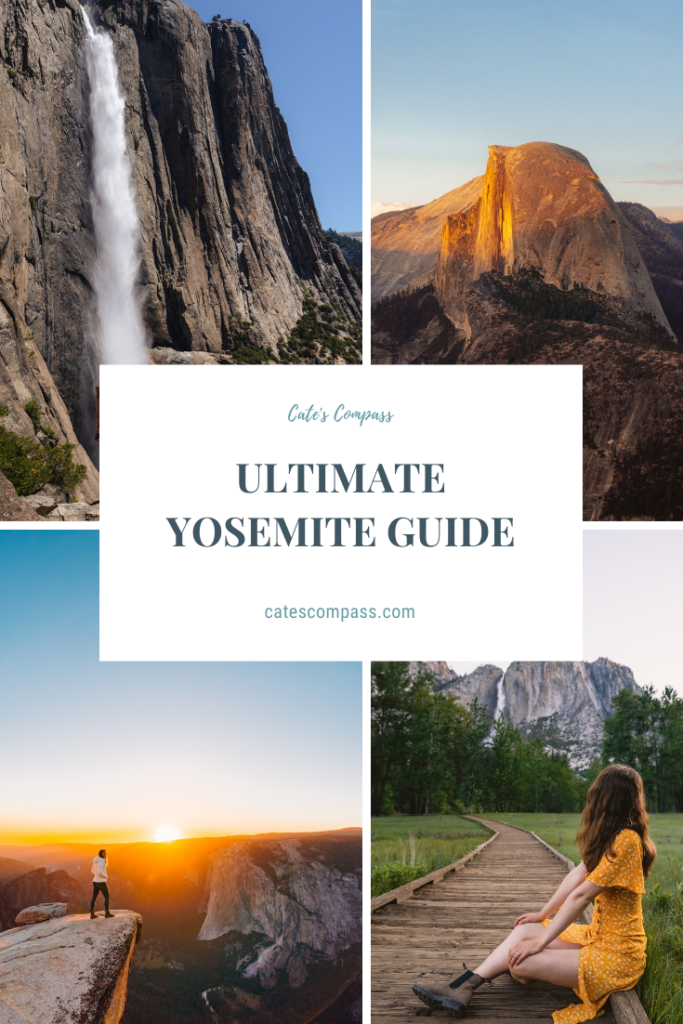The Ultimate Guide to Yosemite National Park
If you’re planning a National Park getaway, look no further than Yosemite. As the 3rd national park created in the U.S., Yosemite has a lot to offer.
Not only is the park teeming with wildlife, like deer and black bears, but it also has an incredibly diverse array of landscapes to explore. Many visitors flock to Yosemite to tackle the infamous Half Dome, but Yosemite is full of other activities that are just as exhilarating.
Park Map
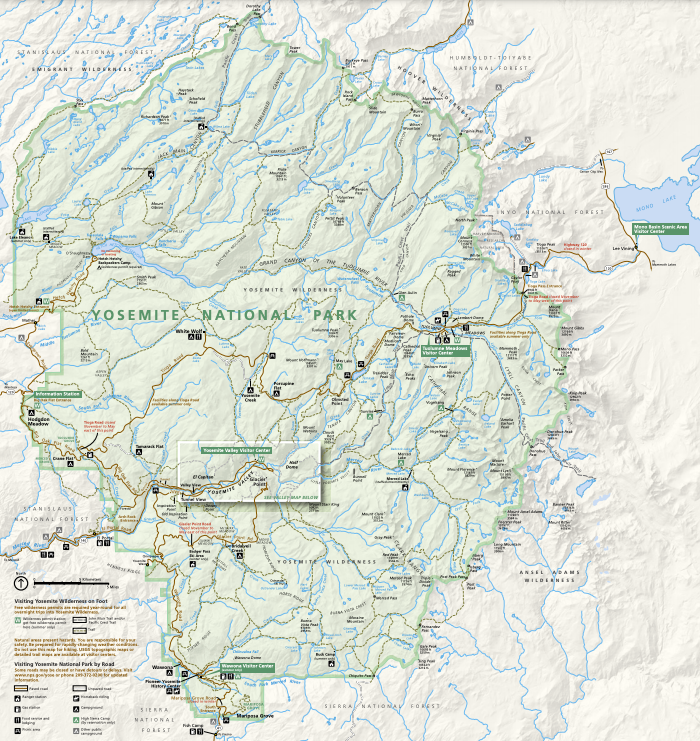

When to Go
The worst part about Yosemite being so beautiful is that it’s pretty much always busy. Not a terrible problem to have. Currently, the park is not requiring reservations for the summer of 2023. Check the park website for the most current information regarding this.
Choosing when to visit Yosemite National Park should be dependent on what you want to see and do.
Spring
Spring is best for smaller crowds but provides limited access to higher-elevation areas and certain roads. Some areas, such as the valley, may be snow-free by April, but expect to have limited access to areas with higher elevations.
Summer
Summer is the busiest season in Yosemite, but full access to all areas and incredible backpacking. Be prepared to enter the park early unless you’re okay with battling crowds, and try to plan each day’s activities in close proximity to each other to avoid a lot of driving.
Fall
Fall is a perfect time for photographers to capture the changing seasons. The weather is idea,l and the crowds have started to thin at this point. I recommend keeping an eye on the weather during your stay in case you need to be flexible. Also, remember to review planned road closures and how they might impact your itinerary.
Winter
Winter is a unique setting in Yosemite compared to the lush meadows of spring. Cross your fingers for fresh snow in the valley. Note that most major roads are closed during this time, so if you’re trying to access higher spots, you’ll need to hike in if the trail is accessible.
To see road conditions and current events impacting Yosemite, click here.
Getting There
Located in California, Yosemite is closest to Sacramento, but can also be accessed from San Francisco, Oakland, and Reno International Airport. A car is a must in Yosemite as the park entrances are at least 15 minutes from Yosemite Valley, the starting point for most adventures.
Speaking of Park Entrances, there are 3: Wawona, Arch Rock, and Big Oak Flat. Arch Rock is closest to Yosemite Valley, while Wawona is closest to Mariposa Grove, home to the Giant Sequoias in Yosemite. For more detailed driving instructions, see here.
Yosemite National Park charges a $35 passenger vehicle fee for seven days. If you plan on going to multiple national parks in 1 year, purchasing an America the Beautiful Pass will help save you money.
Where to Stay
Staying within the park boundaries can be all but impossible unless you’re a good planner or you get lucky. Reservations for the car campgrounds in Yosemite are required year-round and become available in 1-month blocks. The system is best explained on the NPS website here.
There are also some hotels and lodges within the park. Most of these accommodations book up quickly and are expensive. If you’re able to spend the extra cash, this may be worth it to shave off the additional time it takes to drive into the valley.
If you’re not fortunate enough to nab a spot in the park, there are some great options right outside of it. We stayed a Yosemite’s Indian Flat RV Park & Campground. The campground is about 20-30 minutes into the park, has wifi available, and showers. It’s not the best campground we’ve ever stayed at, but you spend most of the day in the park anyway.
Other places include some great recreation campgrounds that are first-come, first-served on the route from Mariposa to El Portal.
Yosemite View Lodge is on the edge of the park, making it a very convenient location. Fish Camp also has a handful of accommodations and is close to Mariposa Grove.
The last option, but one, I would advise against, is to stay in a place like Mariposa. It can be enticing since there are a bunch of options available, but your time on the road will increase dramatically, especially with traffic.
This should be your last resort, and if you are stuck booking in Mariposa, be prepared for a lot of driving. Whichever option you choose, make sure you understand how much the drive time will be to Yosemite on top of what you’re driving inside the park.
Additionally, the only place in the park that has “reliable” wifi is the valley, so if that’s important to you, take it into consideration.
Easy Activities
To be frank, most of the activities within the park require moderate exertion. Below is a list of a few activities that are family-friendly and don’t require a lot of hiking.
Mariposa Grove
An awesome hike through a sequoia grove. The total loop is about 4 miles, but you can adjust it based on ability and who you’re hiking with. The highlight of this hike is the Grizzly Giant. There is also a handicapped lot that you can park at if you have someone with you who requires a shorter walk. Be sure to talk to a ranger (usually one is on-site) about this accommodation.
Cathedral Beach
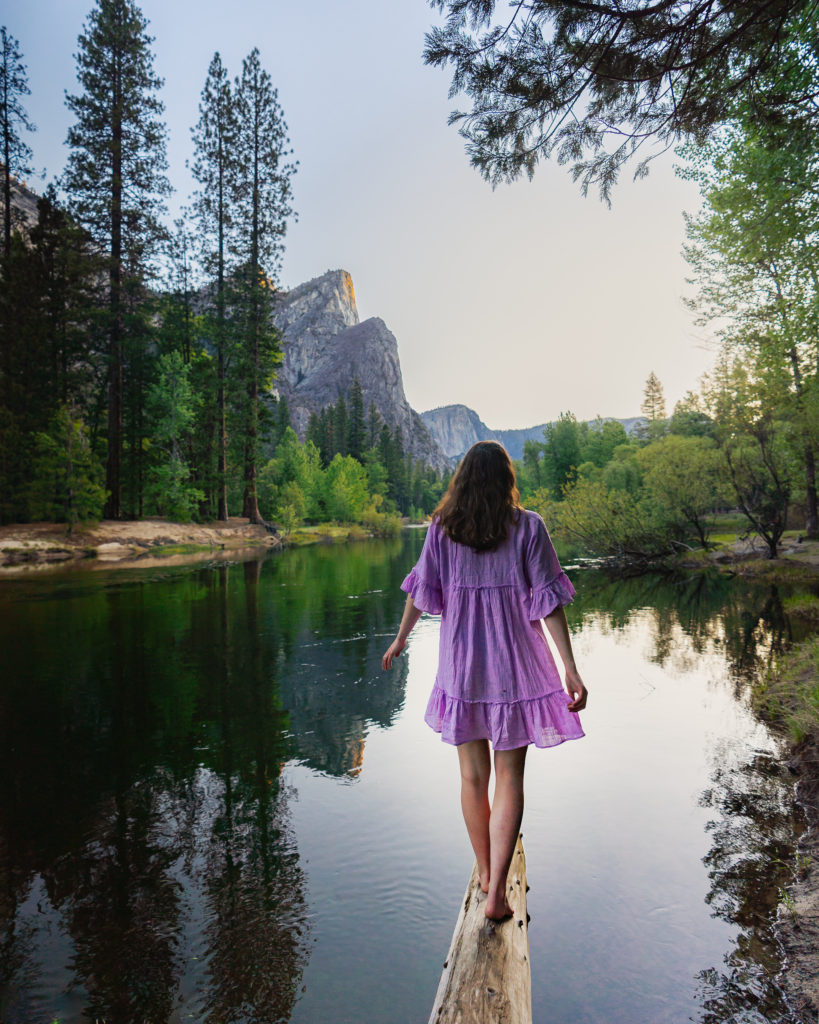
If you’re in search of a place for a nice picnic or a swim in the Merced River, this is the spot. Just make sure you pick up any trash and don’t leave food unattended.
Valley Floor
Hiking or biking the valley floor is a great, easy alternative to some of the more intense hikes in Yosemite. Not only do you get to take in beautiful views like El Capitan, but it’s a great option for those who want to explore and can’t handle the demands of other Yosemite activities.

Lower Yosemite Falls
One of the iconic sites in Yosemite, the lower Yosemite Falls is easy to access and absolutely stunning. I recommend doing this one early since it’s one of the most accessible things to do and gets busier as the day progresses.
Top Yosemite Day Hikes
Upper Yosemite Falls
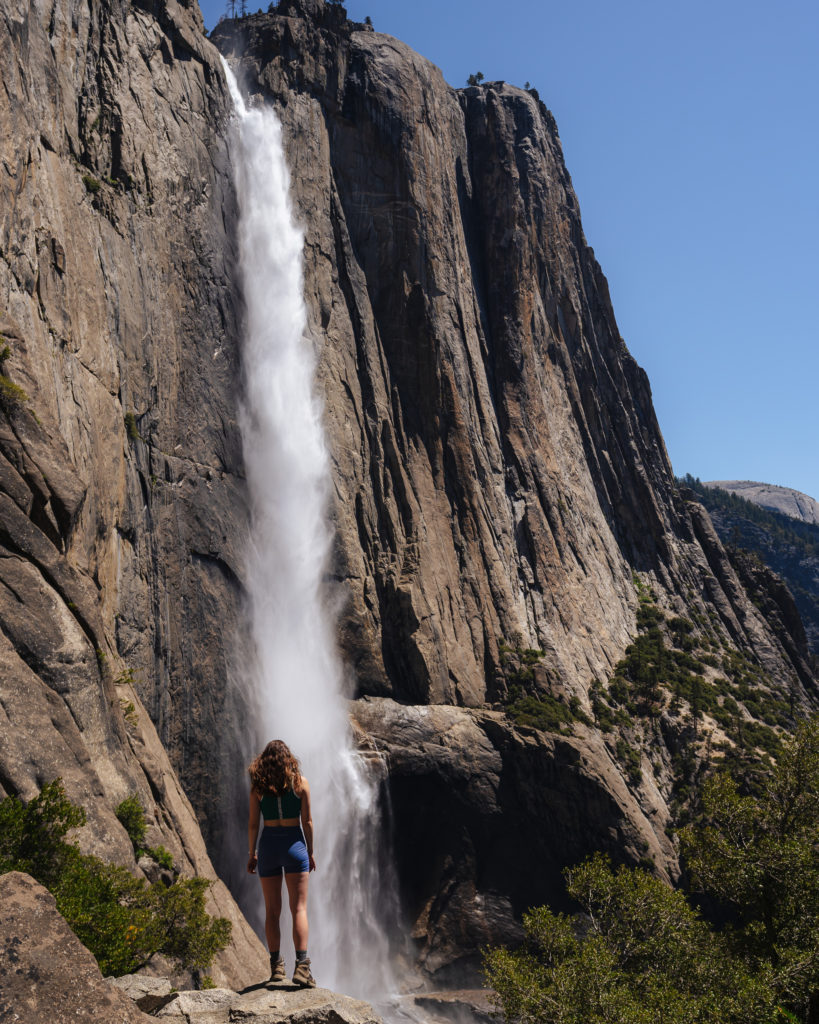
This bad boy is TOUGH, but the views at the top are totally worth it. The hike is a little under 8 miles, and you gain almost 1,000 ft of elevation per mile.
If hiking this in the summer, start as early as possible to avoid the midday sun. Make sure to pack plenty of sunscreen and bring a lot of water (or a way to treat it). The last mile is the hardest and will require many pep talks.
Once you get to the top, there’s a little walkway that you can go out on that is risky business. I did not participate in this endeavor, but I know a lot of people thought it was cool. Definitely check it out if heights don’t freak you out!
The Mist Trail
A classic hike that allows you to see not one, but two Yosemite waterfalls. The trail will be challenging, but revel in the mist that will cool you down and the rewards for your hard work.
Four Mile Trail
If you’d prefer to earn your view of Half Dome instead of driving to it, this hike is for you. Slightly over 9 miles, the hike is strenuous and gives you a well-deserved view of Half Dome at the top.
Additionally, this will be the hike you take if Glacier Point Rd. is closed and you want to see Half Dome.
Cathedral Lakes
A great hike during the summer months, Cathedral Lakes is approximately 9 miles. In order to complete this hike, access to Tioga Pass Road is required.
Best Yosemite Sunsets
Glacier Point
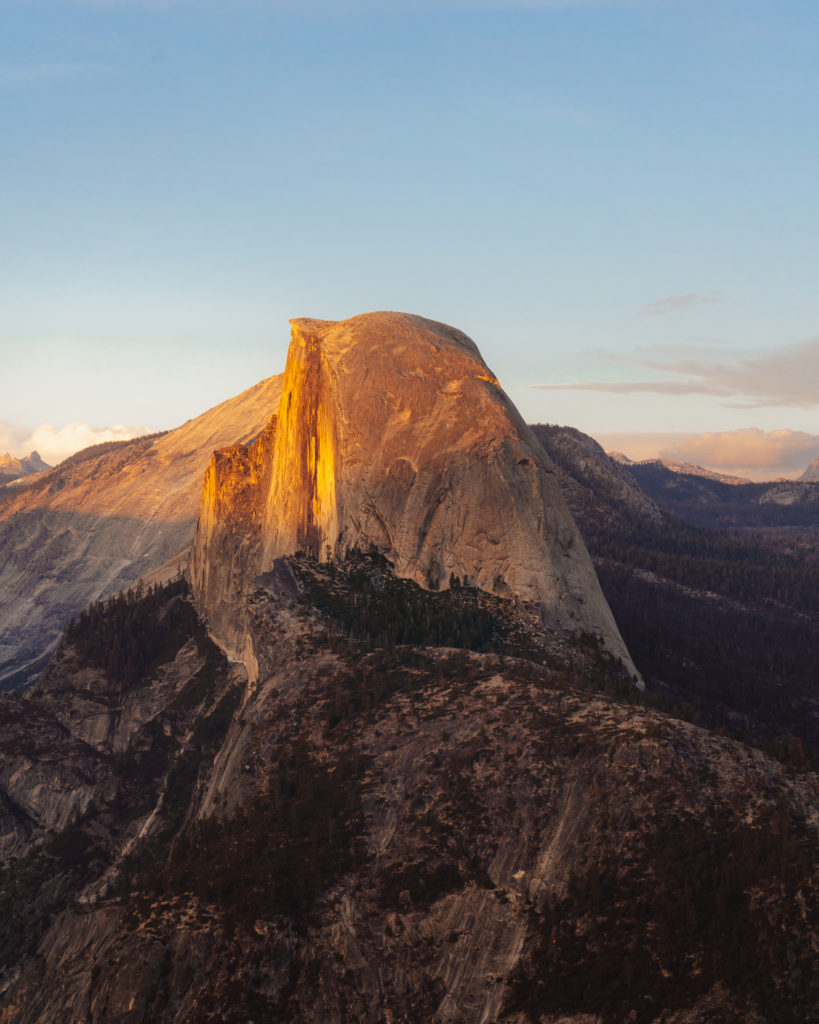
If you’re a photographer or just someone who enjoys taking photos on your phone, this is the spot. The hour-long drive up Glacier Point Road ends at this beautiful spot. There are a few classic photography spots here, so be patient with others as they try to get their shots too!
Also, if you’re trying to get the cool road shot you see everywhere on Instagram, keep your eyes peeled for cars, as this is a busy area.
Taft Point
The most magical sunset I think I’ve ever seen. Taft Point lights up at sunrise and gives off the most beautiful colors. You can choose to do the loop trail that includes Sentinel Dome or go directly to Taft Point.
Be forewarned that this spot is almost always busy. The best way to experience it is to bring a blanket to sit on and a thermos of hot cocoa (or something stronger).


Tunnel View
No hiking is required; Tunnel View has all the perks without any extra effort involved. The only downside is that this area can get very busy around sunset, so make sure to get there early. Another reason to get there early is that parking is limited and fills up quickly!
Valley View
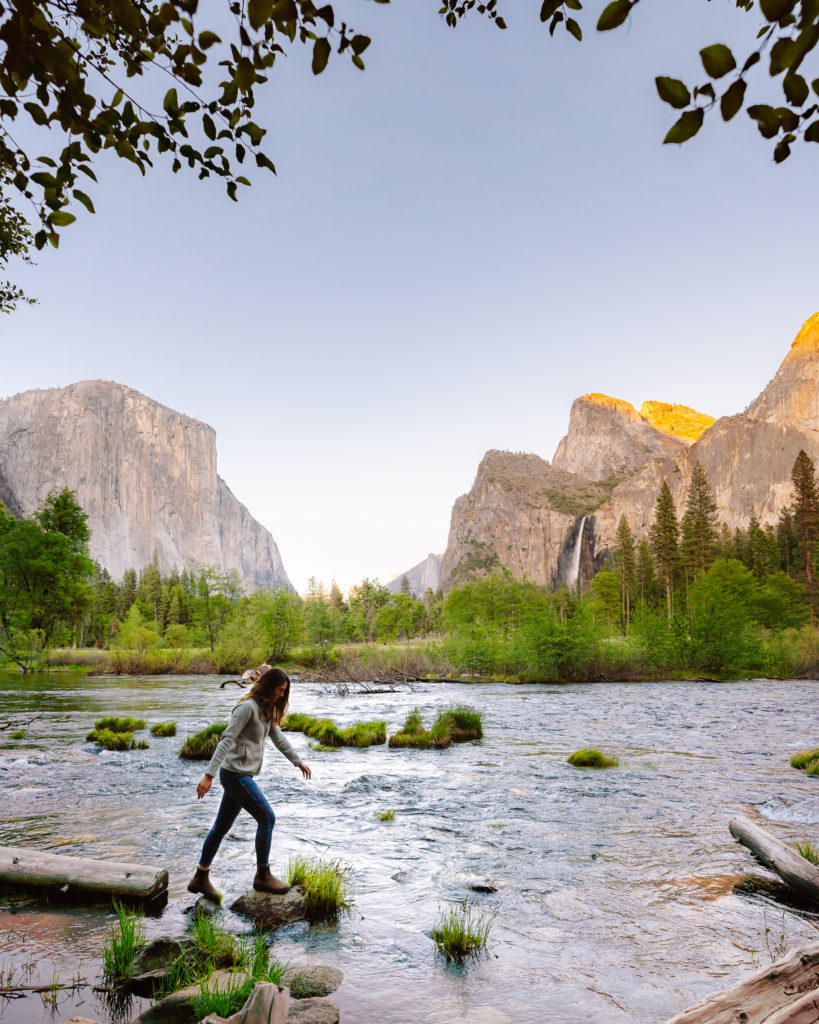
The same view as the tunnel view, but from the valley floor. This is a pull-off from the main road, so it is easily accessible. We were able to find a spot without much trouble around sunset since a lot of people chose to go to Tunnel View.
I really enjoyed the solitude here, but the bugs were wild. I wish I had had some type of bug spray. Definitely pack some if you plan on checking this spot out!
Backpacking
Half Dome
Half Dome is one of the most infamous hikes in the U.S. and internationally. People from all over the world visit Yosemite just to tackle this iconic hike.
The hike is strenuous and requires climbing the dome section using cables. The cables typically go up in mid-May, depending on the weather. Due to its popularity, hikers must have a permit via the lottery system to complete this hike.
Yosemite Grand Traverse
Yosemite Grand Traverse includes many highlights of Yosemite from a backpacking perspective. Hikers enjoy 8 days of beautiful views like Cloud’s Rest, Isberg Pass, and a portion of the John Muir Trail.
Wrap Up: Guide to Yosemite National Park
Yosemite has a ton to offer, so make sure to allot at least a few days to explore this beautiful park. If you’re planning on doing some of the more popular hikes, try to arrive at the trailheads early in the morning to get a parking spot. Lastly, remember to respect the wildlife and follow all national park rules while visiting!
